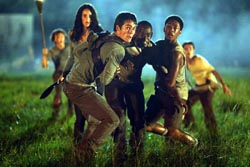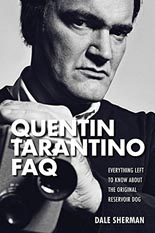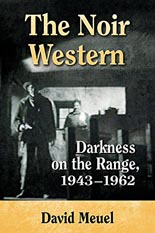
 Third movie, four stories, five or more shades of fucked-up: That’s V/H/S: Viral. And that’s a good thing.
Third movie, four stories, five or more shades of fucked-up: That’s V/H/S: Viral. And that’s a good thing.
Coming from the filmmakers behind such indie shockers as Timecrimes, Resolution and Deadgirl, this presumably final sequel of the rather divisive and ornery horror-anthology franchise again plays with — and relies upon — the found-footage concept, yet adds a level of subtext bound to sail over the heads of those viewers who could stand to heed its message. We’ll get to that in a sec.
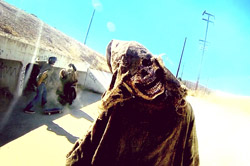 But first, a quick rundown of Viral’s videos:
But first, a quick rundown of Viral’s videos:
• An amateur magician graduates from the trailer park to the Vegas stage when he acquires a cloak that derives its considerable powers from human blood.
• A scientist invents a machine that enables him to interact with the parallel-universe versions of himself and his wife.
• Punk-ass skateboarders in search of the next killer curb mess with the wrong drainage ditch in Mexico: one that wakes the dead.
• Finally, serialized as the wraparound tale is the cryptic saga of a young man, his abducted girlfriend and the streets-speeding ice cream truck that just might have her inside.
Coiled with a devilish sense of humor, Viral is more malleable and freeform than 2012’s V/H/S and 2013’s V/H/S 2; more often than not, unpredictability rules, leaving us to believe that anything can happen. It does, in a glorious parade of mayhem that sends up the utter self-absorption of today’s attention-seeking tweeters, Instagramers and YouTubers who live for “likes” and soak up validation like a sponge to spilled milk. If that plan of attack sacrifices scares — and it does — for knowing winks at the expense of the Me-Me-Me Generation, so be it! #theywouldntgetitanyway —Rod Lott

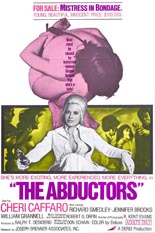
 Ginger McAllister — aka 1971’s
Ginger McAllister — aka 1971’s 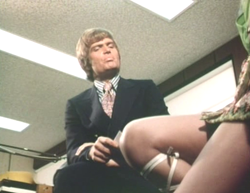
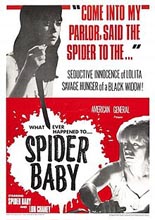


 Hungering for more teenage post-apocalyptic games?
Hungering for more teenage post-apocalyptic games? 